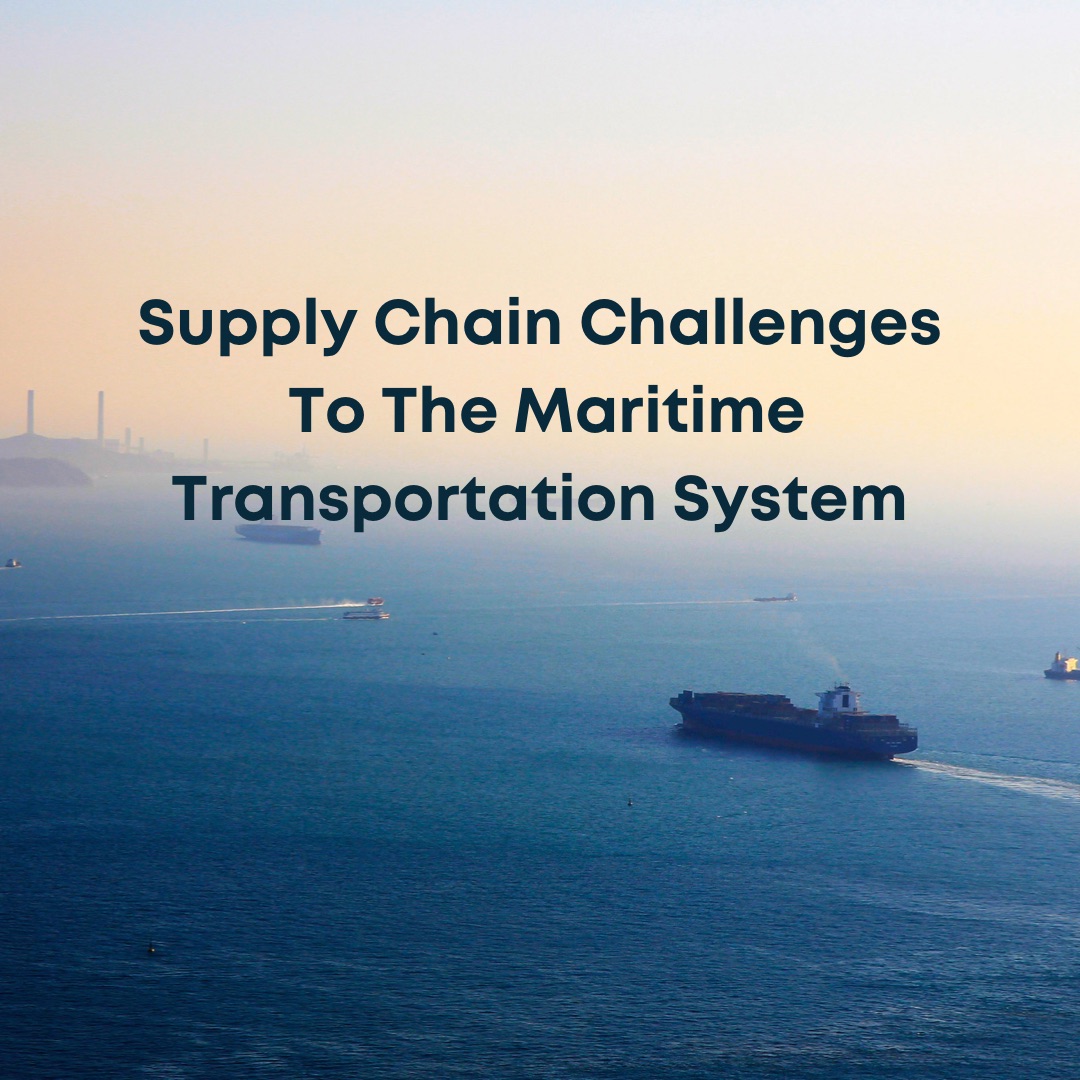Supply Chain Challenges to the Maritime Transportation System
What are Maritime Transportation Systems (MTS)?
Maritime transportation is the transport of people and cargo by way of navigation on waterways. Maritime transportation systems (MTS) are networks of maritime transportation that play major roles in domestic and international supply chains.
It consists of waterways, ports, and intermodal landside connections that allow the various modes of transportation to move people and goods to, from, and on the water. The MTS includes the following:
- 25,000 miles of navigable channels
- 236 locks at 192 locations
- The Great Lakes and the St. Lawrence Seaway
- Over 3,700 marine terminals
- Numerous recreational marinas
- Over 174,000 miles of rail, connecting all 48 contiguous US States, as well as Canada and Mexico
- Over 45,000 miles of interstate highway, supported by over 115,000 miles of other roadways
- Over 1,400 designated intermodal connections
Maritime transport is the backbone of international trade and the global economy. Over 80% of the volume of international trade in goods is carried by sea, and the percentage is even higher for most developing countries.
That can be explained by the fact that transport by water is cheaper than transport by air, despite widely fluctuating exchange rates and a fee placed on top of freighting charges for carrier companies known as the currency adjustment factor. Moreover, as of 2020, maritime transport accounts for roughly 80% of international trade, according to UNCTAD. And MTS are the network of channels and connections which make this international trade possible.


What is a Maritime Supply Chain (MSC)?
The Maritime Supply Chain is “the connected series of activities of shipping services which is concerned with planning, coordinating and controlling containerized cargoes from the point of origin to the point of destination”.
The supply chain (SC) is defined as “an aggregate set of value chains linked by inter-organizational relationships, both upstream and downstream of the leader company in order to deal with all the flows involved (cash, material, goods, and information), from the first supplier’s supplier to the last customer of the end customer, as well as the reverse flow of products and returnable and/or disposable products, generating value for the end consumer and for SC stakeholders”.
Therefore, in a nutshell, the SC represent a complex network of important relationships that ensure that products and services are delivered to the end customer within the chain, efficiently, in a timely manner and with the least amount of issues possible.
What are the challenges to the MTS?
There are many challenges faced on all the levels of the MSC, and managing these challenges efficiently has been the focus of all players in the supply chain, to keep the healthy flow of delivery all over the globe.
Some of the major challenges faced within the MSC are recurrent or one-time extreme weather events, the COVID-19 pandemic and its lasting effects, the war in “Ukraine”, and other crises that affect it.
“As disruptions are becoming part of the new normal, resilience and risk management emerge as new mantras for transport, logistics, trade and supply chains,” said Shamika N. Sirimanne, director of UNCTAD’s technology and logistics division.
Maritime SC remains a leading service sector for promoting global and intercontinental trade as an essential system that links the globe together. This is because the MSC plays a critical role as an intermediary and in transportation to facilitate trade flow in intercontinental and global SC.
To cope with these challenges and find timely solutions, companies have supply chain management (SCM) departments, which manage the coordination of the chain of events associated with the movement of goods from raw materials to the ultimate customer.
It is therefore imperative for firms to have a supply chain that will foster efficient and effective optimization of goods, services and information, and to learn how to create and implement management decisions that will facilitate the job for all parties involved.

Leave a Reply